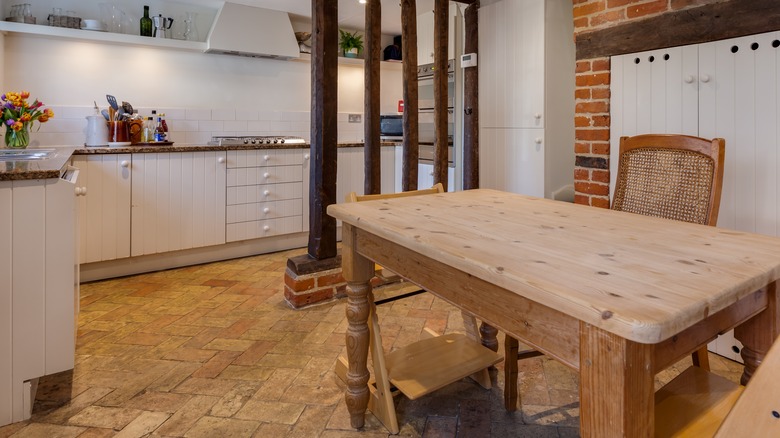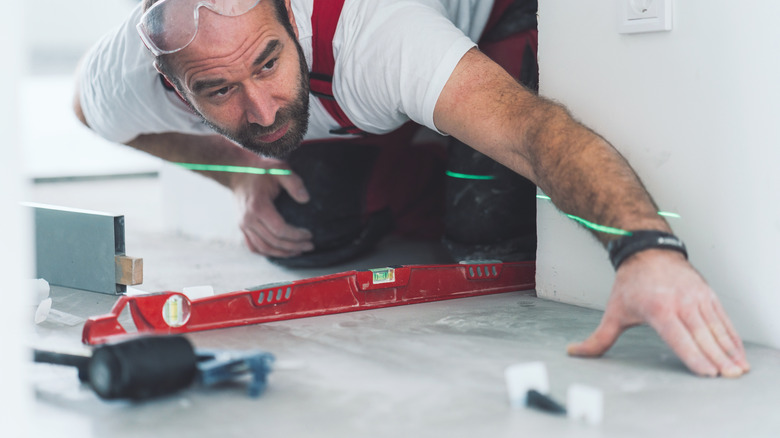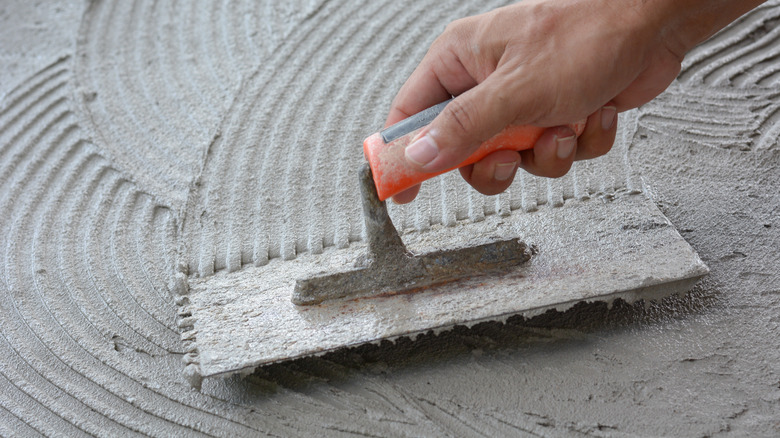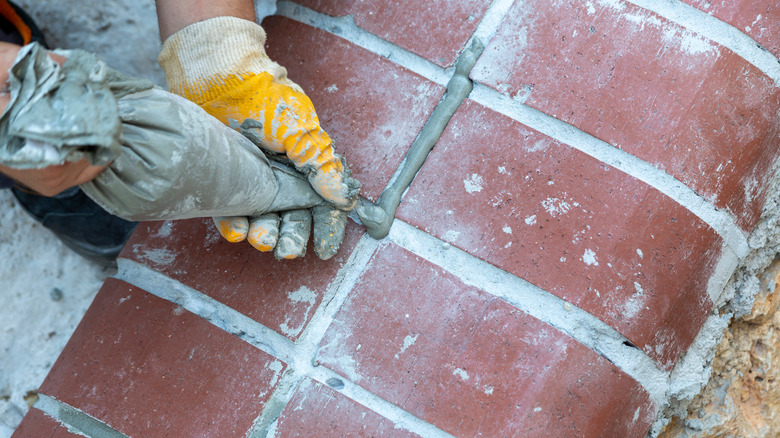How To DIY A Brick Floor In Your Home
We may receive a commission on purchases made from links.
Genuine brick floors are a great way to install a bit of rustic charm in your home in places like foyers, kitchens, and laundryrooms. Often a popular flooring material in centuries past, rustic brick floors offer a wealth of texture and dimension that grounds any room. TikTok user @mellcasey recently showed off a three-part series about DIY installing beautiful recycled brick floors in her remodeled country cottage-style kitchen. The entire installation, which involves preparing a subfloor, laying the brick, and grouting, took around 3-4 days and may be far less complicated than you imagine.
Popular everywhere, from Spanish mission-style homes to country English cottages, this rich floor material offers a lovely alternative to tile and stone floors, proving both long-lasting and durable. While moisture can be a concern with the porousness of brick as a material, with the proper sealing and subflooring those problems can be avoided. In addition, any concerns over the weight of brick floors can be mitigated by using a thinner brick, like @mellcasey's salvaged vintage brick.
Preparing the floor for brick
To prepare your flooring for laying brick, you will need to make sure you have a clean and debris-free layer of concrete subflooring, If your home has wooden subflooring, or like @mellcasey, you are bricking over another type of flooring, you can purchase concrete sheeting like these from Durock, that will need to be laid down as a base layer.
To lay Durock, make sure the floor surface is smooth and level before laying down a layer of tile mortar with a V-notched trowel. Cut the pieces of Durock board to size with a utility knife and adhere to the floor using cement board screws, making sure to lay them in a brick-like pattern to avoid weak spots where four corners come together. Once laid, use more mortar at the joints then cover with Fibatape. Once you have a smooth even surface and the Durock layer has dried completely, lay out your bricks in the arrangement you desire. @mellcasey lays out her bricks horizontally, but you can also do a chic herringbone pattern.
Laying the brick
You will need access to an angle grinder or wet tile saw to cut the bricks as needed in corners, around door frames, and along baseboards. A framing square can help you get the angles on the cuts just right for a perfect fit. To adhere the bricks to the floor, you will need a tile adhesive like AcrylPro or Thinset Mortar. Mark out and install in small enough areas of the floor as you work that will help keep your adhesive from drying out before the bricks are laid. You usually have about 20 minutes before it will be too dry to work with.
Spread the mortar using the notched trowel at a 45-degree angle in a thick layer and then press your bricks into the mortar securely. The grooves in the mortar will create a more amenable surface for the bricks to stick to. You can use tile spacers to get completely uniform grout lines or lay them freestyle for a less perfect and more rustic cottage look.
Grouting and finishing
Wait 24-48 hours for the bricks to dry fully in place before grouting. To grout your brick, you can use a sanded tile grout like Polyblend or colored grout like SimpleGrout, depending on the color and finished look you want. Some experts suggest using mortar in place of grout. Apply using a rubber float to force the grout into the joints. Alternatively, a grout bag or syringe may help speed the application process. Remove all excess grout and clean the bricks thoroughly with a sponge to avoid a dusty film.
To get a finish that is waterproof and easy to clean, use a surface-penetrating sealer or water-based acrylic over the entire floor covering both the grout and bricks. You can use a brush or paint roller to apply three or four coats, allowing each layer to dry in between coats. Reapply every few years or as needed. To keep the floors looking good, clean them with a vacuum and mop them at least once a week. Use an acid or sulfate-based cleaner for scrubbing and removing stains. You can also create a simple and natural vinegar and water solution for keeping brick floors clean.



